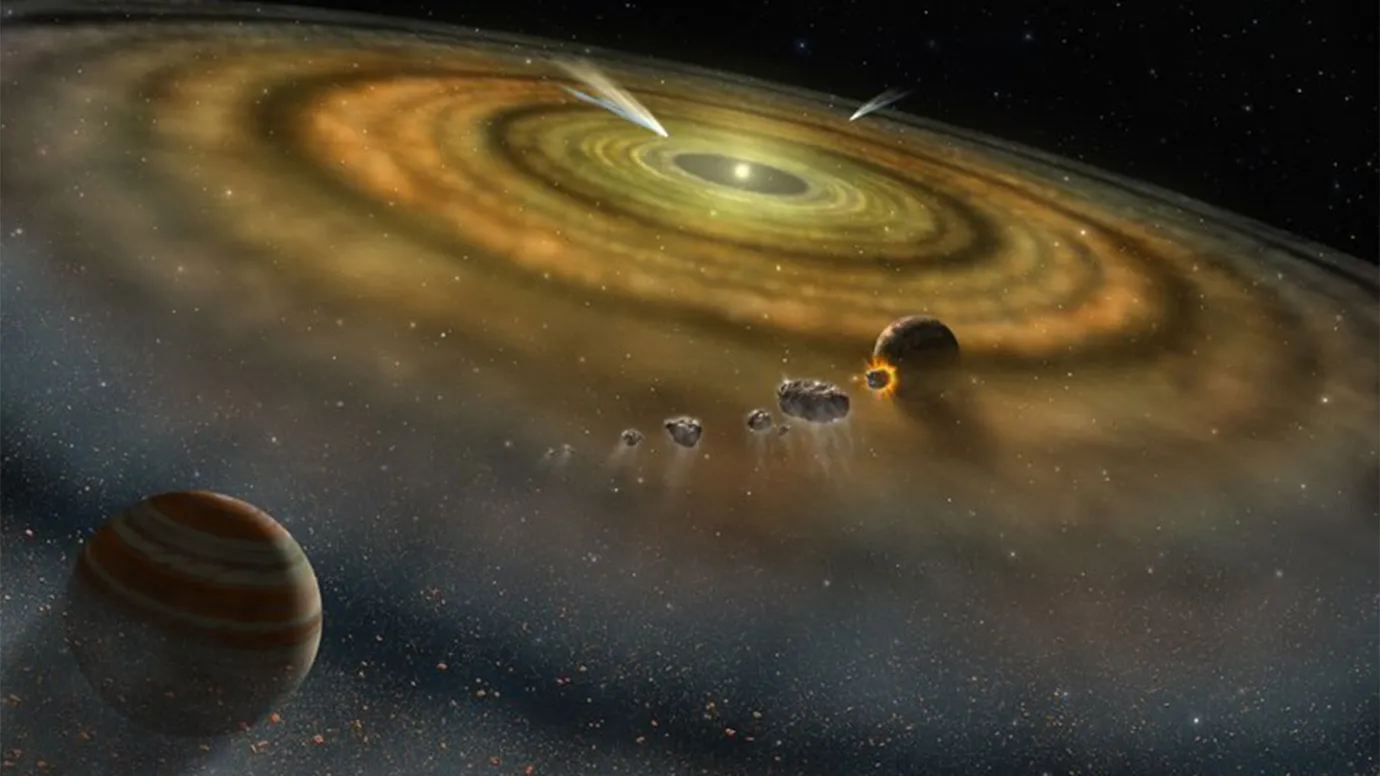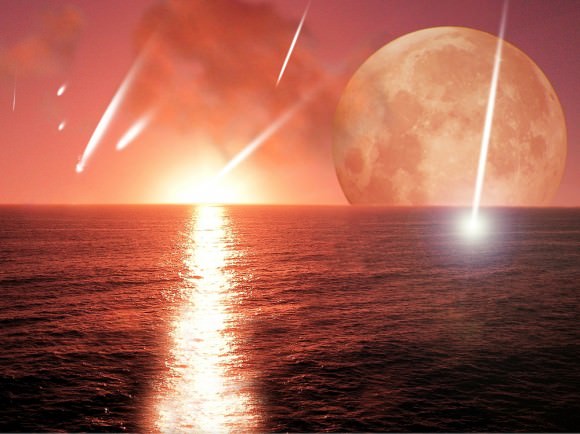The giant outer planets haven’t always been in their current position. Uranus and Neptune for example are thought to have wandered through the outer Solar System to their current orbital position. On the way, they accumulated icy, comet-like objects. A new piece of research suggests as many as three kilomerer-sized objects crashed into them every hour increasing their mass. Not only would it increase the mass but it would enrich their atmospheres.
Continue reading “When Uranus and Neptune Migrated, Three Icy Objects Were Crashing Into Them Every Hour!”The Giant Planets Migrated Between 60-100 Million Years After the Solar System Formed

Untangling what happened in our Solar System tens or hundreds of millions of years ago is challenging. Millions of objects of wildly different masses interacted for billions of years, seeking natural stability. But its history—including the migration of the giant planets—explains what we see today in our Solar System and maybe in other, distant solar systems.
New research shows that giant planet migration began shortly after the Solar System formed.
Continue reading “The Giant Planets Migrated Between 60-100 Million Years After the Solar System Formed”Earth’s Water Story Gets A Plot Twist From Space Rock Search

We at Universe Today have snow on our minds these days with all this Polar Vortex talk. From out the window, the snowflakes all look the same, but peer at flakes under a microscope and you can see all these different designs pop up. Turns out that our asteroid belt between Mars and Jupiter is also much more diverse than previously believed, all because astronomers took the time to do a detailed survey.
Here’s the interesting thing: the diversity, the team says, implies that Earth-like planets would be hard to find, which could be a blow for astronomers seeking an Earth 2.0 somewhere out in the universe if other research agrees.
To jump back a couple of steps, there’s a debate about how water arose on Earth. One theory is that back billions of years ago when the solar system was settling into its current state — a time when planetesimals were crashing into each other constantly and the larger planets possibly migrated between different orbits — comets and asteroids bearing water crashed into a proto-Earth.

“If true, the stirring provided by migrating planets may have been essential to bringing those asteroids,” the astronomers stated in a press release. “This raises the question of whether an Earth-like exoplanet would also require a rain of asteroids to bring water and make it habitable. If so, then Earth-like worlds might be rarer than we thought.”
To take this example further, the researchers found that the asteroid belt comes from a mix of locations around the solar system. Well, a model the astronomers cite shows that Jupiter once migrated much closer to the sun, basically at the same distance as where Mars is now.
When Jupiter migrated, it disturbed everything in its wake and possibly removed as much as 99.9 per cent of the original asteroid population. And other planet migrations in general threw in rocks from everywhere into the asteroid belt. This means the origin of water in the belt could be more complicated than previously believed.
You can read more details of the survey in the journal Nature. Data was gathered from the Sloan Digital Sky Survey and the research was led by Francesca DeMeo, a Hubble postdoctoral fellow at the Harvard-Smithsonian Center for Astrophysics.

